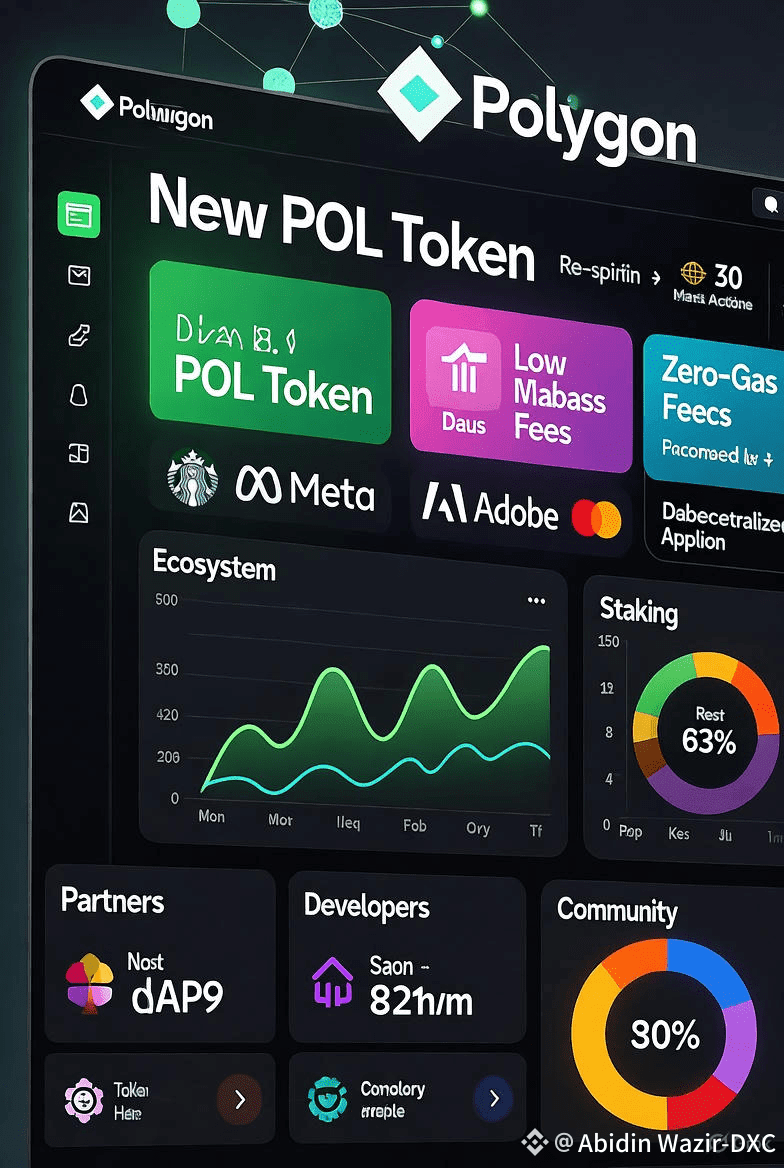From the earliest days of Ethereum, one critical challenge persisted — how to make the network scalable, efficient, and affordable for everyday users and developers. Polygon entered this scene with a clear mission: to act as Ethereum’s partner in scalability, not its competitor. Its vision was to help Ethereum grow in size, speed, and usability without compromising on decentralization or composability.
Originally launched in 2017 as the Matic Network, Polygon rebranded in early 2021 to reflect a broader ambition — to become “Ethereum’s Internet of Blockchains.” Rather than functioning as a single sidechain, Polygon evolved into a multi-chain, interoperable framework where developers can launch and connect scaling solutions and independent chains, all while remaining fully compatible with Ethereum’s ecosystem.
Growth Through Compatibility and Infrastructure
Polygon’s strength lies in its deep compatibility with Ethereum’s tooling, developer-friendly environment, and low transaction costs. These attributes have made it a natural choice for teams seeking scalable Web3 solutions. Developers can write and deploy smart contracts nearly identical to those on Ethereum, yet benefit from far lower gas fees and faster performance — all while tapping into Ethereum’s liquidity and user base.
Scalability and affordability have been key drivers of adoption. Polygon’s evolving architecture — from its initial sidechain model to modern Layer-2 chains, rollups, and interoperability modules — allows it to overcome the high fees and slow confirmation times that hindered early Ethereum dApps.
Architecture and Technical Evolution
Polygon’s modular architecture supports multiple scaling paradigms. Its Proof-of-Stake (PoS) chain enables staking, validation, and network security, with regular checkpointing to Ethereum for trust and consistency. Emerging technologies like zk-rollups, Plasma frameworks, and the Polygon SDK further expand the platform’s flexibility — enabling developers to create custom chains and scaling solutions tailored to specific use cases.
A vital component is the Polygon Bridge, which allows assets and liquidity to move seamlessly between Ethereum and Polygon. This ensures that applications built on Polygon remain interoperable and integrated with Ethereum’s broader ecosystem — gaining scalability without isolation.
Token and Economic Roles
Polygon’s native token — originally MATIC, now transitioning to POL — underpins the network’s economy. It’s used for transaction fees, staking, network security, and governance. As adoption grows, the token’s utility deepens: its value is driven by network activity, ecosystem expansion, and governance participation rather than mere speculation.
Real-World Adoption and Ecosystem Momentum
Polygon has seen explosive growth across DeFi, gaming, NFTs, enterprise, and payments. Its cost-efficiency and speed have attracted developers and users alike, while major enterprises and global brands have embraced it for scalable blockchain integration.
The network’s momentum is reinforced by developer grants, ecosystem incentives, and community programs, creating a self-sustaining growth loop — more projects attract more users, which in turn attract more developers and liquidity.
Strengths: Why Polygon Stands Out
Polygon’s advantages are clear:
Ethereum Compatibility: Avoids ecosystem fragmentation by leveraging existing EVM tooling.
Cost & Speed: Ideal for high-volume or low-value transactions — critical for gaming, micropayments, and consumer apps.
Modular Flexibility: Supports sidechains, rollups, and custom chains depending on application needs.
Together, these strengths position Polygon not just as a scaling layer but as a core platform for next-generation decentralized infrastructure.
Challenges and Considerations
Polygon faces several challenges. Questions around decentralization, validator participation, and governance remain active discussions. As competitors in the Layer-2 and modular blockchain space multiply, continued differentiation is key. Furthermore, transitions like the MATIC to POL migration must be managed carefully to maintain community confidence and clarity.
The Road Ahead: Multi-Chain, Modular, Composable
Looking ahead, Polygon’s focus is on a multi-chain, modular, and composable future — an ecosystem where independent chains, rollups, and application-specific networks interconnect fluidly. This “Internet of Blockchains” vision allows developers to spin up purpose-built chains for gaming, finance, identity, or enterprise — all unified under a shared, interoperable framework.
As demand for scalability and interoperability accelerates, Polygon’s technology — from zk-proofs to modular bridges — positions it as a cornerstone of the Web3 infrastructure stack. Its evolving token model will further align incentives around staking, governance, and cross-chain economics.
Conclusion: Polygon’s Pivotal Role in Web3’s Growth
In the evolving story of blockchain, Polygon has become far more than a scaling solution — it’s a foundational layer for growth, accessibility, and innovation. By empowering developers to build fast, affordable, and Ethereum-compatible applications, Polygon addresses some of the biggest barriers to mass adoption.
As Web3 transitions from experimentation to mainstream use, networks that achieve scale without sacrificing interoperability will define the future. Polygon’s architecture, ecosystem, and vision make it one of the most influential infrastructure projects in this transformation.
In short: Polygon doesn’t just scale $ETH
Ethereum — it scales the future of the decentralized internet.